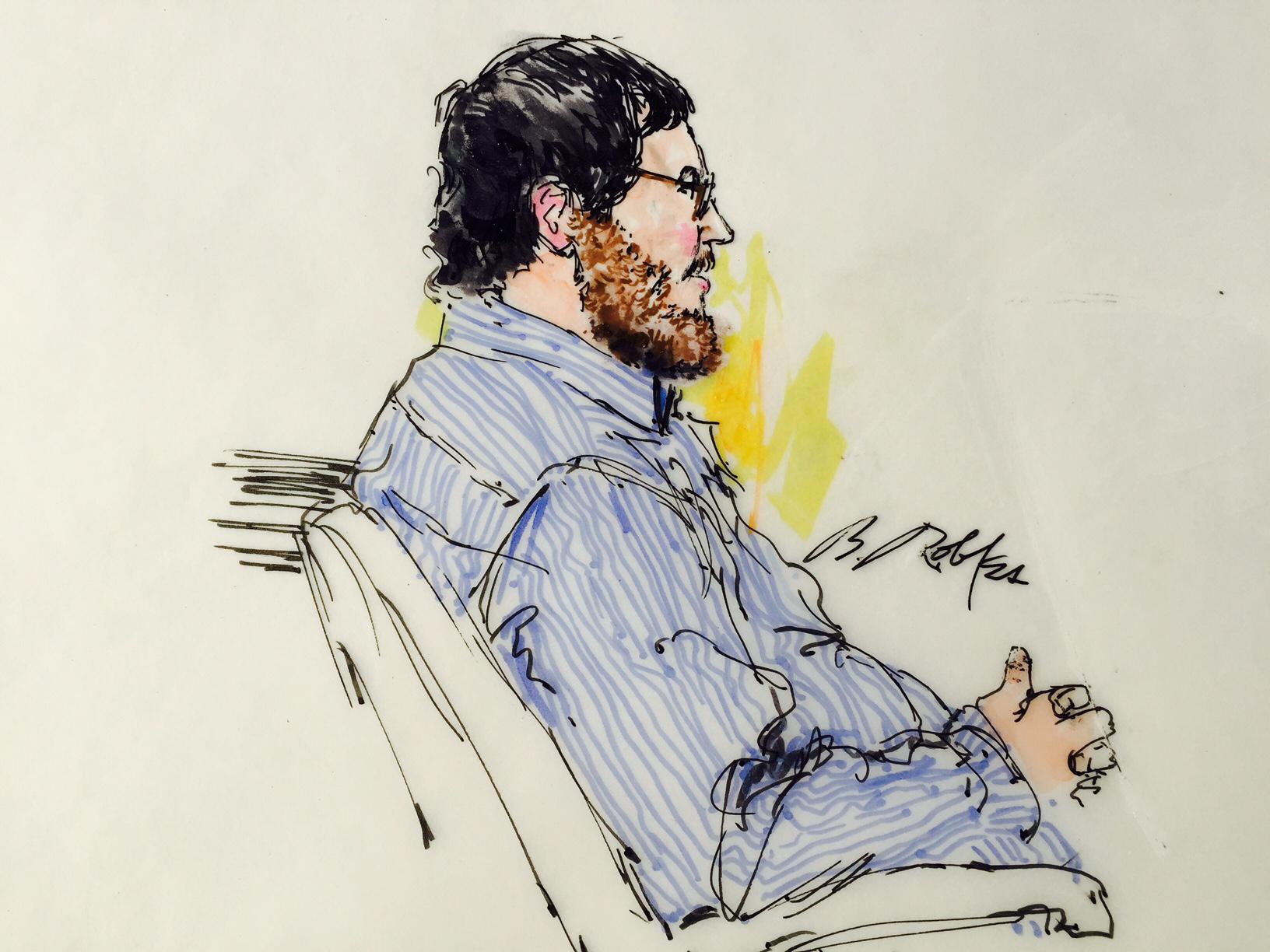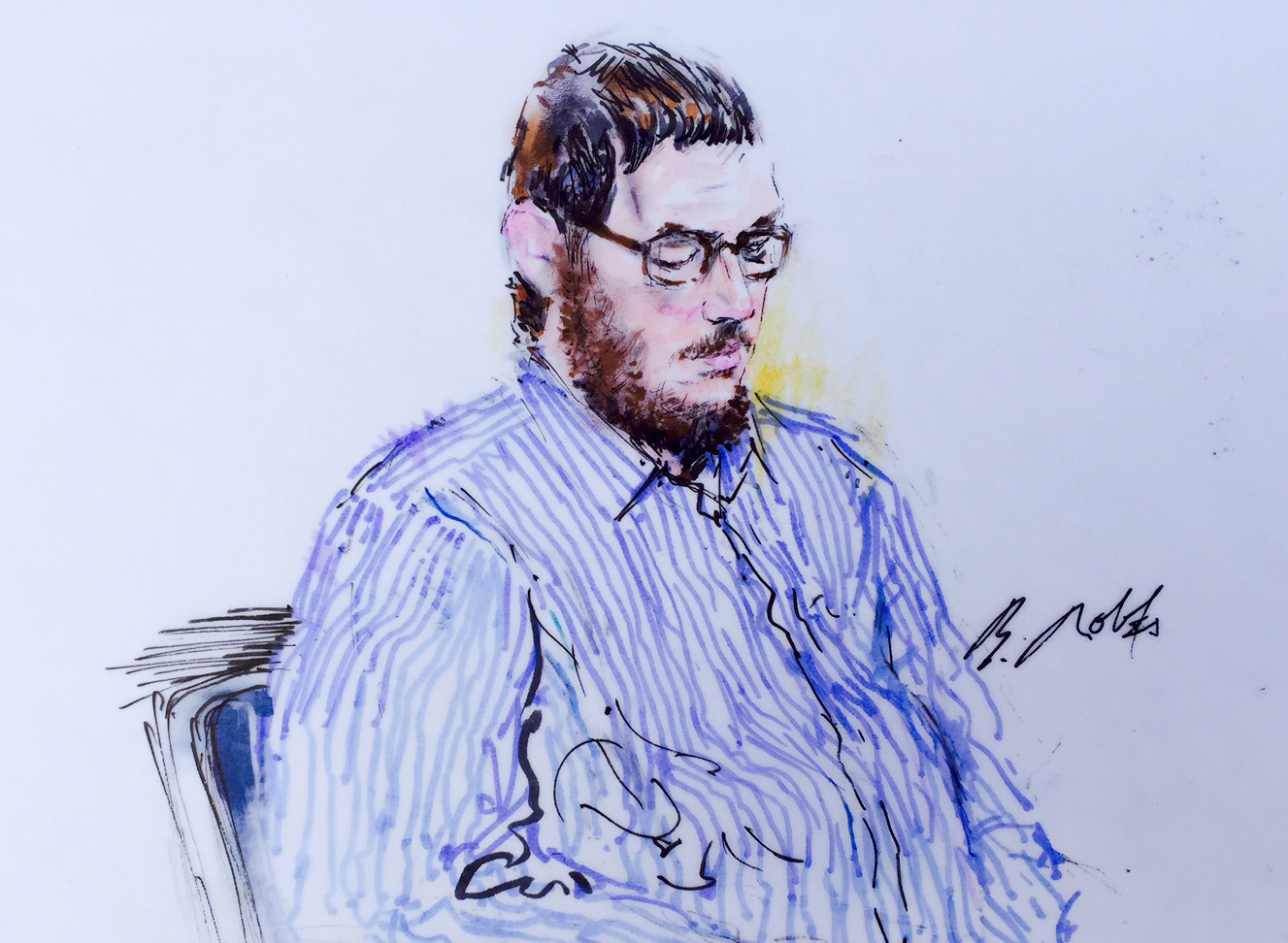

Posted 8:45 a.m. | Last update 8 p.m.
The jury in the Aurora theater shooting trial has again declined to rule out the death penalty as it moves toward sentencing James Holmes, sayimg Monday that Holmes' lawyers haven't presented a strong enough case to eliminate execution as an option.
The decision clears the way for another round of arguments before the jury makes a final decision between capital punishment and life in prison without parole. Prosecutors will call victims to testify about the impact of Holmes' crimes on their lives.
The same jury rejected Holmes' insanity claim and found him guilty of murdering 12 people and trying to kill 70 more in the 2012 attack.
Death penalty sentencing hearing is several mini trials
First, jurors were asked to deliberate whether Holmes was eligible for the death penalty — they found he is — then Holmes was allowed to put on a case to appeal to the the mercy of the jury.
His attorneys called his mother and father to the stand. His sister too. They called a psychiatric expert -- who actually testified for the prosecution and found him legally sane. But in the sentencing hearing he reiterated that without mental illness, this crime would not have happened.
After about a week of the defense making the case to spare Holmes’ life, jurors were given two options: end the hearing now and give him life in prison or continue with sentencing. They opted to continue.
“Continue” mean that family members of victims can offer testimony in front of the jury about how this tragedy has affected them. This is going to be obviously an emotional and difficult thing to do with the defendant sitting about 10 feet from them.
The prosecution expects this could take two or three days. Then there will be one last closing argument from both sides and jurors will deliberate for a final time on whether he gets death or life in prison.
It has not taken long for jurors to reach verdicts at any point in this trial. Legal experts split on the meaning behind that. Some say this means that in the end the jury is likely to vote for death. Others say that just because jurors want to continue the hearing doesn’t mean they’ll all agree to impose death in the end.
Jurors do have to be unanimous, otherwise the default punishment is life in prison. All of them have been death qualified, meaning that when they were selected they told the court they were not against death as a punishment.
There were more tears in court with this decision today, from both the victims and Holmes’ family -- especially his mother. She hung her head and cried as it became clear the sentencing hearing would continue. His dad put his arm around her.
Not all victims families want Holmes to get the death penalty. They’re OK with life in prison without parole. But they are in the minority of families. Most want the death penalty. And the trial is one big step closer to that.
Judge Carlos A. Samour Jr. reminded jurors on Monday to stay away from news reports about the case and the recent theater shooting in Louisiana. He told them to report back to court at 10 a.m. Tuesday.
The midnight premiere nightmare
Here's a recap of the events that brought us to this point in the trial.
On July 20, 2012, Holmes opened fire on patrons at the Aurora Century 16 movie theater, killing 12 and injuring 70. He entered during a midnight premiere of "The Dark Knight Rises," which was the third and final installment of director Christopher Nolan's "Batman" movie trilogy.
There were around 400 people inside the theater. Holmes watched the first few minutes of the film before exiting to his car. He returned through an exit door he had propped open, wearing military-style clothing and a gas mask. Many in the audience assumed he was wearing a costume before he set off two tear gas grenades. He then fired a total of 76 shots into the crowd from a shotgun, a semi-automatic rifle and a handgun. He later testified to playing techno music through earbuds to drown out the screams of victims.
Police arrested Holmes without incident behind the cinema just after the shooting. FBI agents disarmed explosive booby-traps at his apartment the next day.
A once-promising student
At the time of the shooting, Holmes was a 24-year-old Ph.D student in a selective neuroscience program at the University of Colorado. He was in the process of dropping out, even though he came to the university with an impressive academic record: He graduated from the University of California, Riverside in neuroscience with the highest honors.
Math and science also surrounded Holmes as a child growing up in the suburbs outside of San Diego. His mother was a registered nurse and his father was a mathematician who developed statistical models for the financial industry. Both would later testify as character witnesses in the sentencing phase of his trial.
Shortly after his arrest, authorities charged Holmes with 116 counts of attempted murder, 24 counts of first-degree murder and other counts for weapons possession and inciting violence. Authorities initially faced Holmes with 142 charges. That number would climb to 165 in the time before the trial.
Holmes' attorneys said they would be willing to plead guilty to avoid the death penalty prior to the trial, but the prosecution declined and sought capital punishment. His defense team entered a plea of not guilty by reason of insanity. The trial began April 27.
The sanity defense
Legal sanity is a much higher bar than psychological sanity. An insane person might be delusional or exhibit strange behaviors, but legal sanity requires proof that a defendant could not tell the difference between right or wrong at the time of the crime.
The question of legal sanity framed the trial against Holmes: Did he know the shooting was wrong when it happened? Holmes admitted to a psychiatrist that he did. He also had carefully planned the attack and called a hotline before committing the murders. That led some like retired defense attorney Frederick Leatherman to speculate the defense was a "slow-motion guilty plea." In other words, Holmes' lawyers knew they couldn't prove him innocent, but used the trial to introduce mitigating evidence that could lessen his sentence later on.
Even though they disagreed on Holmes' legal sanity, psychiatric experts for the defense and the prosecution diagnosed Holmes as having some kind of schizophrenia. A key piece of evidence for both sides was a notebook Holmes mailed to a former psychiatrist at the University of Colorado. The defense used it of proof that Holmes became increasingly delusional before the attack; the prosecution cited the careful planning evident in the notebook.
The verdict
On July 16, jurors found Holmes guilty of all 165 charges, including 24 first-degree murder charges. The verdict made him eligible to receive the death penalty. He showed no visible emotion as the judge read each of the guilty verdicts against him. The verdict came down four days before the third anniversary of the shooting.
The 12 who died in the attack ranged in age from 6 to 51 years old. Many of the 70 injured still suffer from physical and neurological disabilities that will last their lifetimes. Survivors and victims of the shooting were united in their hopes of a guilty verdict, but differed on the question of the death penalty. Still, none of them has explicitly come out against Holmes receiving the death penalty.
Holmes would be the first person put on death row in Colorado in six years if sentenced to death. But a death penalty sentence wouldn't necessarily ensure a prompt execution. The last year an execution actually took place in Colorado was 1997, leading some to call it a de-facto non-capital punishment state.
Ben Markus and Sam Brasch contributed to this report.







